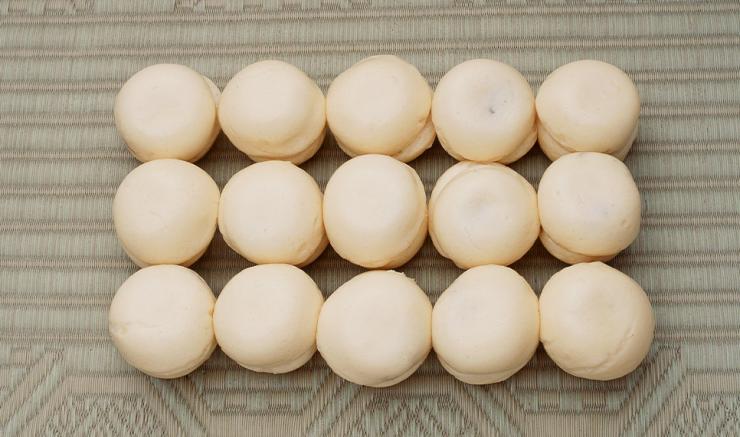Saka Manju: A Local Uenohara Specialty
Main content starts here.

Saka manju resemble ordinary steamed wheat buns but are typically made with cooked rice and sakadane, the yeast mash leftover from sake brewing. Though the exact methods vary by maker, the sakadane is generally mixed with sugar and cooked rice and left to ferment. Then, flour is added and the dough kneaded until soft and pliant. Kneading the mixture into the dough produces a distinctive, mildly salty flavor. Common fillings for the buns include red bean paste and sweet miso, though savory fillings such as salmon and pickled mustard greens are also popular.
During the Edo period (1603-1868), long before Uenohara merged with several neighboring villages in 1955 to become the city it is today, the settlement was a bustling town along the Koshu Kaido route connecting the capital of Edo with Kai Province (today’s Yamanashi Prefecture). Light, luxurious textiles such as locally woven Kai silk were highly sought after by Edo merchants, who flocked to the silk market in Uenohara.
While saka manju were initially considered home cooking for festivals and gatherings, thanks to visiting merchants they gradually became popular through word of mouth. It is said that during the Edo period, the many saka manju shops of Uenohara regularly saw long lines of hungry customers.
Today, saka manju remains a beloved local specialty and is often eaten when people gather. Uenohara is still home to around a dozen shops specializing in saka manju, many of them family-run. Each shop has its own take on the treat, with some offering less traditional fillings such as chestnut, pumpkin, and matcha tea. Every local resident has their preferred saka manju supplier in town. To find your own favorite, you may just have to try them all.
Home of Mt. Fuji > Discover > Saka Manju: A Local Uenohara Specialty